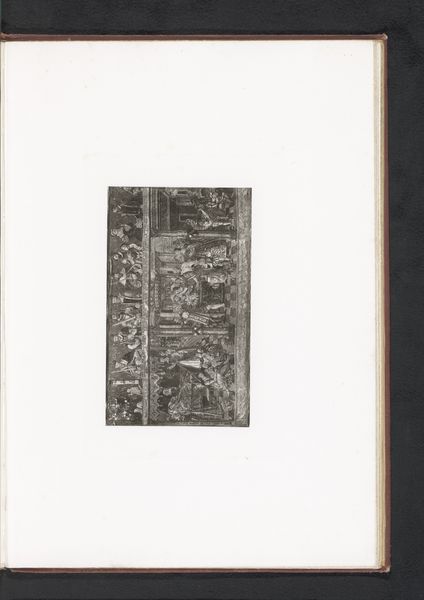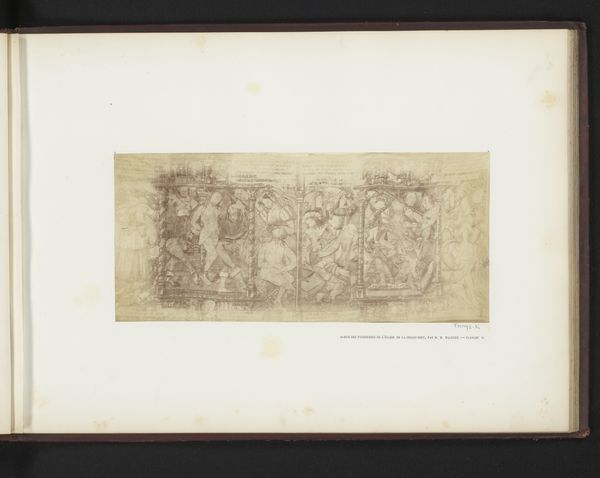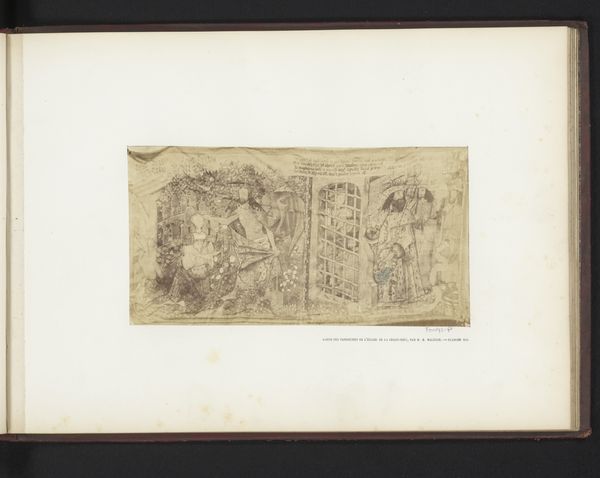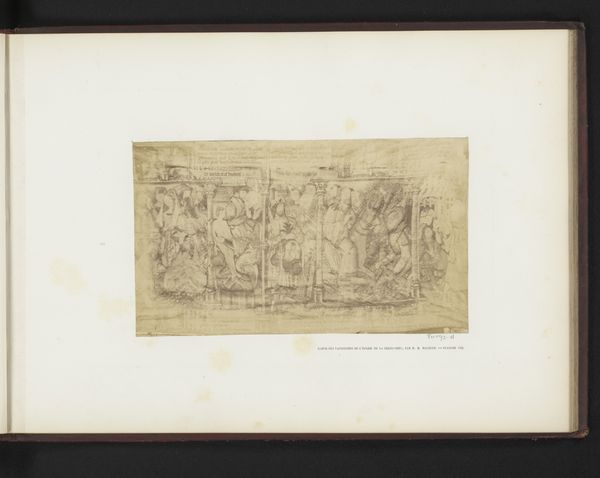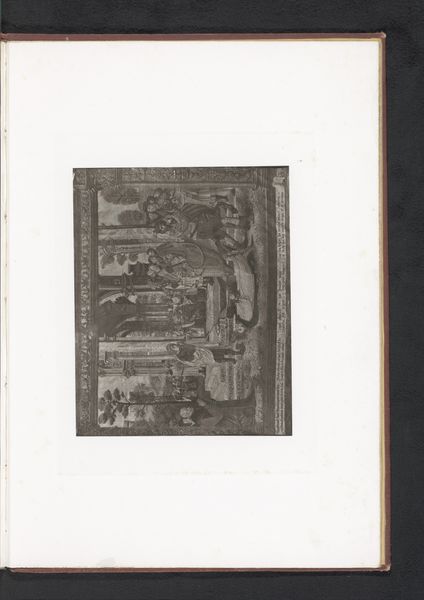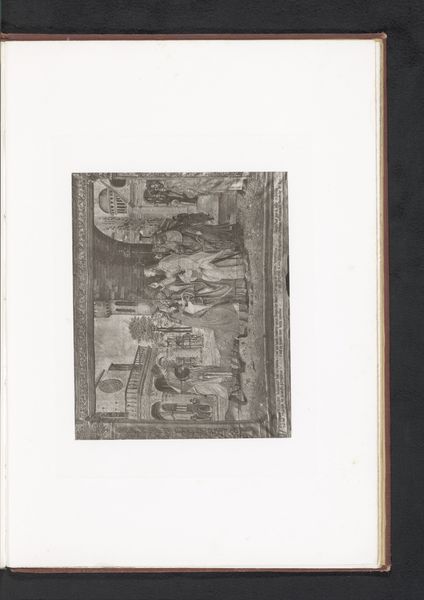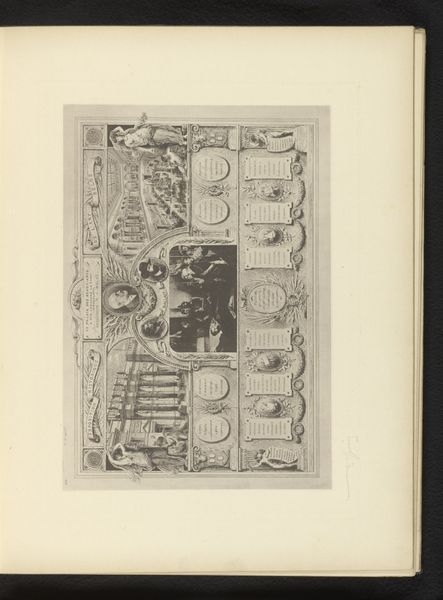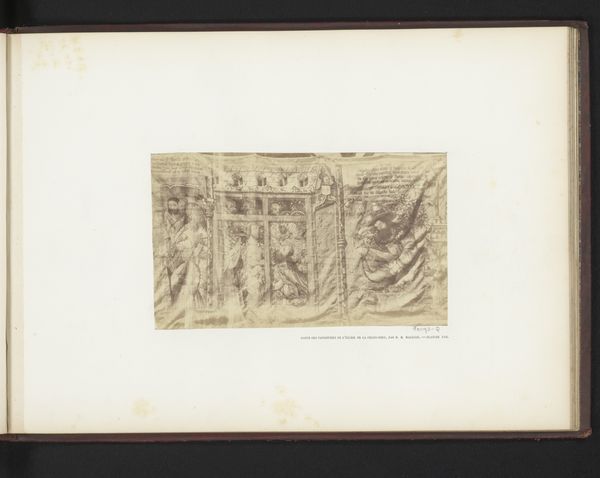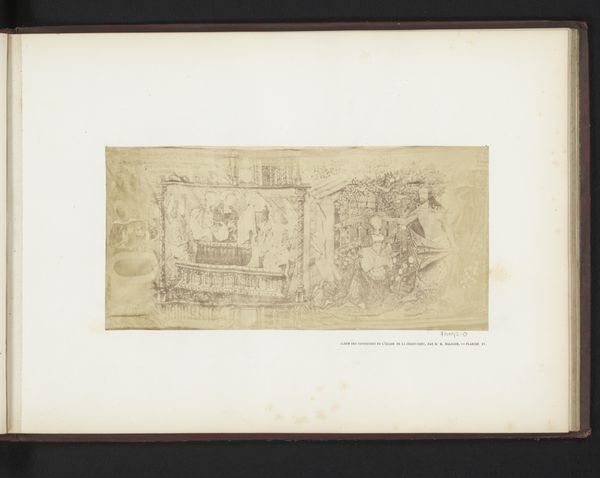
Boekband uit de collectie van de Soeurs de Notre-Dame de Namur, opgesteld op een tentoonstelling over religieuze objecten uit de middeleeuwen en renaissance in 1864 in Mechelen 1864
0:00
0:00
print, relief, engraving
#
medieval
# print
#
relief
#
engraving
#
miniature
Dimensions: height 172 mm, width 253 mm
Copyright: Rijks Museum: Open Domain
Curator: Here we have a print by Joseph Maes from 1864, showcasing a bookbinding from the collection of the Soeurs de Notre-Dame de Namur. It was featured in an exhibition in Mechelen. The work is executed in engraving and relief. Editor: Initially, the density of the details strikes me, a richness compacted into miniature scenes that speak of a sacred quietude. Curator: Precisely. Note the intricate border, a repetitive motif almost overwhelming the central panels. Consider also the relationship between the depicted scenes and the function of the book itself, potentially liturgical. Editor: It's impossible to ignore how this was displayed. Framing matters. This print preserves an ephemeral moment of presentation: a historical reconstruction of the medieval at the height of modern collecting and spectacle. This exhibition undoubtedly served a specific socio-political function. Who was visiting this exhibition? How was the material culture of religion being consumed at the time? Curator: A valid point. This act of exhibiting does create another layer of contextual significance. Let's not disregard how effectively Maes captured texture in a monochrome print—the simulated depth of carving and embellishment, the subtle shadowing. What kind of formal impact do you find it conveys? Editor: It certainly elevates the craft. It transforms an everyday religious tool into an aesthetic experience that can be taken in by the bourgeoisie and working classes in Belgium at this time. We are not holding the book; rather, we have access to viewing art through this method of reproducible display. The choice to reproduce this is significant; it's almost like these medieval bookbindings can find another use after being translated into this new form. Curator: I concur. I feel this exhibition must have evoked something powerful by recreating an earlier devotional experience. Perhaps this mediated, two-dimensional encounter provided the public an idealized, perhaps less encumbered, connection to their spiritual roots. Editor: The act of display allows people to contemplate and reassess history, which can affect their personal relationship with materials. Something has to be said about our own contemporary access to a picture of that experience in a museum through tools like this.
Comments
No comments
Be the first to comment and join the conversation on the ultimate creative platform.
